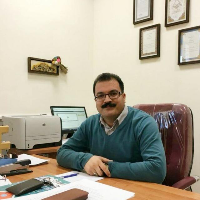Analysis of the Performance of Islamic Rural Councils (IRC) towards Sustainable Rural Development (Case Study: Semirom County)
Author(s):
Abstract:
IntroductionA large number of development projects in developing countries focus on rural areas. Emerging global evidences suggest that while the sustainability is a crucial and independent dimension of development, it has most often been neglected when planning these projects in many developing countries, including Iran. These have been faced with numerous challenges such as a growing sense of rural households’ dissatisfaction, negative attitudes, and conflicts with the project, as well as unsustainability, and in many instances complete failure. In recent years, rural development projects in Iran and many developing countries have been criticized for their detrimental effects on various aspects, and unsustainability at large. Then, the impacts of these projects and their long-term future have emerged as major rural policy issues in recent year. In this regard, in line with the triple bottom line approach from sustainable development, the IRCs are of particular importance in considering the sustainability of rural development. The IRCs establish a range of rural development projects to alleviate poverty, unemployment, and an insufficient food supply. Although these projects were assumed to be beneficial for rural people, they often had unintended negative impacts on the environment and local communities. Therefore, the aims of this paper were twofold. First, to find out the performance of IRCs towards sustainable rural development; second, to determine factors that are most likely the key determinants of performances of the IRCs in Semirom county, Esfahan province, Iran. Methodology An evaluation research methodology adopted in this study consists of survey technique conducted with a sample of members of IRCs in the county. The data were acquired by questionnaires used in face-to-face interviews. A panel of experts confirmed the face validity of the questionnaire. The questionnaire was improved based on the pilot study results. The reliability of questionnaire was tested by using a sample of 15 members of IRCs in villages outside the study area. All statistical analysis were performed using SPSS statistical package (version 17.5 for widows), which consisted of reliability measures, t-test, and hierarchical regression. A significance level of 0.05 was used to establish statistical significance. The Semirom (31º25'N, 51º43'E) is a county located in the Esfahan province of Iran. The county is comprised of two districts, six rural districts (include many villages), and 122 villages. Seventy From 122 villages have IRCs. Therefore, the statistical population of this study consisted of 70 villages with 210 members of IRCs in Semirom county. Out of this, 47 villages with 141 members of IRCs were selected using Pattern sampling size table with the aid of multistage stratified random sampling. Finally, data were collected from125 members of IRCs in 47 villages. Using a model to focus on the performance of IRCs will help policy makers and experts to make the best use of the facilitating factors that might improve these local organizations. Therefore, the performance of the IRCs was empirically tested using a "total performance index" (TPI) to measure the performance of IRCs: Where TPI is the total performance index of IRCs. PERFORM1. .. PERFORM6 is the performance of IRCs in socio-culture, economic, environmental, and constructional and communication with other organizations, and physical Guide Plan. ResultsFindings revealed the moderate performance of the IRCs. The mean total performance was 2.86 on a scale of 1 to 5 (standard deviation=0.45). Furthermore, the six components of the performance (socio-cultural, economic, environmental, constructional and communicational ones with other organizations, and physical Guide Plan) were placed in a medium position, either. Hierarchical regression analysis was used to validate the theoretical model. In each stage of analysis, a set of predictor from the “determinants of IRCs performance” model entered into the regression equation. It was hypothesized that a variety of factors, including social capital, village and its environment, government's support, members’ satisfaction, members’ knowledge, public participation contribute to formation of IRCs performance. The dependent variable of the analysis was performance of IRCs. The results of hierarchical regressions indicated that the models were able to explain a small percent of variability in performance of IRCs. Findings indicated that among the variables postulated in the model to explain performance of IRCs, “members’ social capital”, “government's support”, and “public participation” had a significant influence on performance of IRCS regarding sustainable development. ConclusionBased on the results of this study, people in rural areas have expressed their desire to cooperate with the councils to solve the village's problems. Therefore, rural people should play the main role in the process of project planning and development. Much has been written about the value of local participation for all stakeholders, particularly in bringing local values and social objectives to the decision-making process and promoting sustainability. Furthermore, government support plays the main role in improving IRCs’ performance. Then the government's support should increase to improve IRCs performances and activities.
Language:
Persian
Published:
Journal of Rural Research, Volume:2 Issue: 3, 2012
Page:
77
https://magiran.com/p956216
مقالات دیگری از این نویسنده (گان)
-
Analyzing the Conservation Behavior of Edible-Medicinal Plant Species Among Villagers in the Dasht-Room District, Boyer-Ahmad County
Nematollah Jaafari, *, Mehdi Nooripoor
Quarterly Journal of Environmental Education and Sustainable Development, -
Explaining Water Conflicts among Rice Farmers along Taghar River in Choram County, Kohgiluyeh and Boyer-Ahmad Province
Akram Azizifar, *, Ayatollah Karami
Journal of Water Research in Agriculture,


